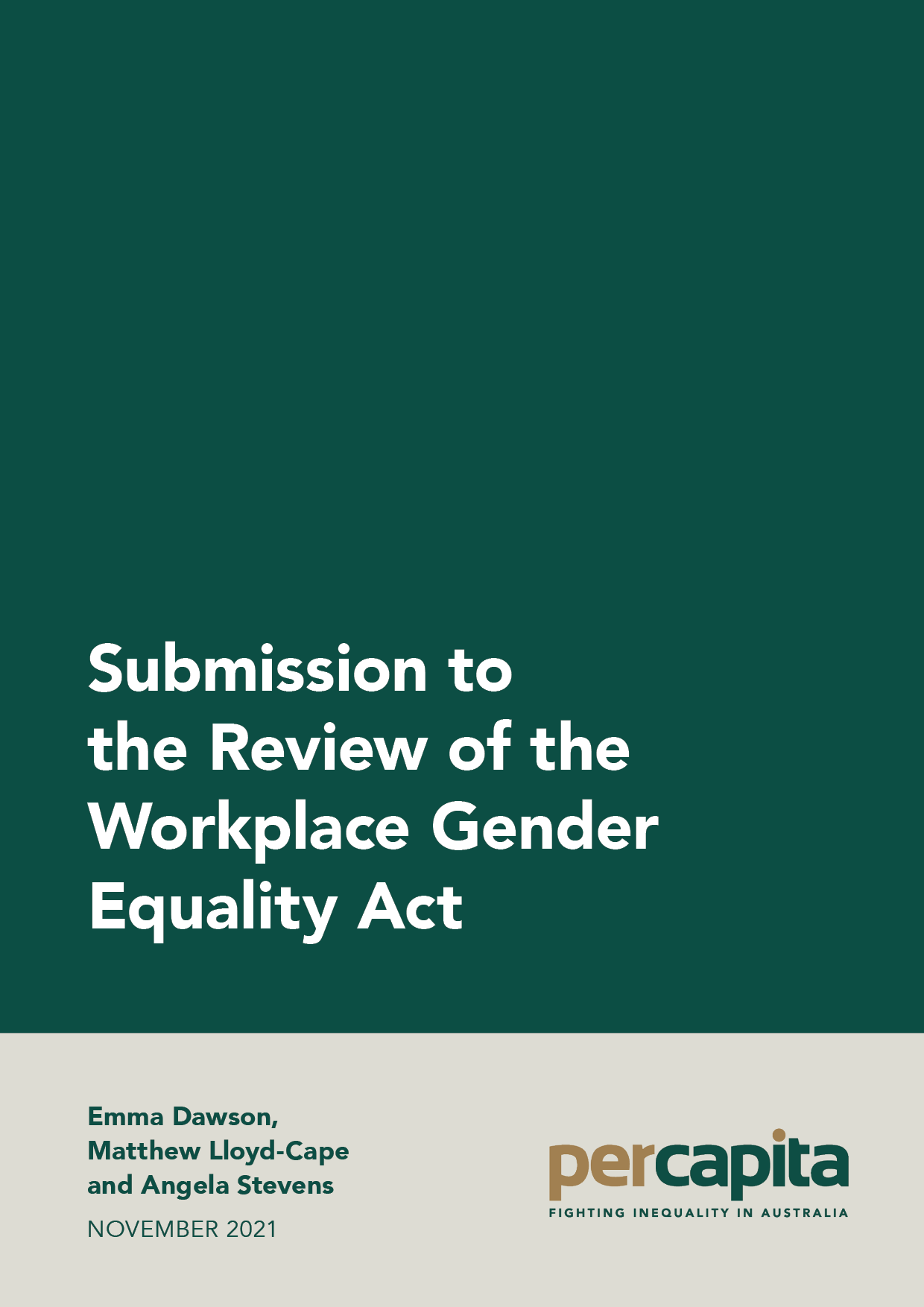Per Capita welcomes the opportunity to contribute this submission to the Review of the Workplace Gender Equality Act, 2012 (the Act), which sets the scope of work for the Workplace Gender Equality Agency (WGEA). The Act has not been reviewed since its introduction in 2012, and the public’s understanding of the gender pay gap, and its manifestation in the Australian workforce, has developed considerably in the intervening years.
The impact of COVID19 increased the gender pay gap in Australia: the 31st of August marked Equal Pay Day in Australia in 2021, where a woman needed to work an additional 61 days to earn the same pay as a man. By comparison, women needed to work an extra 59 days in 2020, and an additional 58 days in 2019. Although the gender pay gap fell to 13.9% in November 2020, this slight decrease was attributed to a decrease in men’s hours worked, rather than an improvement in women’s wages.
Gender equality in the workplace is a complex issue, for which detailed, timely and accurate data is required. Reducing gender inequality in the workplace requires that the scope and scale of the problems entailed are well documented, widely available and open to analysis.
The work of the WGEA has increased the knowledge base of some elements of gender inequality in the workplace, by a significant degree. However, the scope of the WGEA’s data collection limits understanding of the complex causes of gender inequality at work. This is primarily due to the limits of the measure of Adult Weekly Ordinary Time Earnings (AWOTE) used to quantify the gender pay gap under the Act.
Further, the WGEA’s analysis tends to combine many of the intersecting causes of women’s workforce disadvantage into the simple catch-all definition of “discrimination”. As we will discuss, the motherhood penalty, the highly gender segregated nature of Australian industries and the relative underpayment of jobs in feminised industries through lower rates of award wages cause structural imbalances in the pay of men and women which go far beyond active discrimination.
This submission will focus on the scope of the information collected by the WGEA as determined by the Act, including measurement tools, the coverage of employers and the lack of intersectional data gathered.
Key recommendations
- That employers be compelled to report both Average Weekly Ordinary Time Earnings (AWOTE) and Adult Weekly (total cash) Earnings (AWE) for their businesses, and to report the hours of part time and casual workers by gender.
- That the size at which private sector organisations must report to the WGEA should be reduced from 100 to 50, in line with the ASIC definition of a large company.
- That all federal, state, territory and local government employers should be required to report to the WGEA.
- That the WGEA work with the ABS to develop methodologies to measure the earnings gap in contract, sole trader and gig economy work.
- That the age of workers be included in the data collected.
- That non-binary gender data should be recorded, with the agreement of employees, consistent with ABS Standard for Sex, Gender, Variations of Sex Characteristics and Sexual Orientation Variables.
- That data on the number of workers from CALD backgrounds, ATSI peoples and people with disabilities should be recorded with the agreement of employees.
- That employers provide details of paid parental leave, both in terms of that made available and that taken up by men and women.

